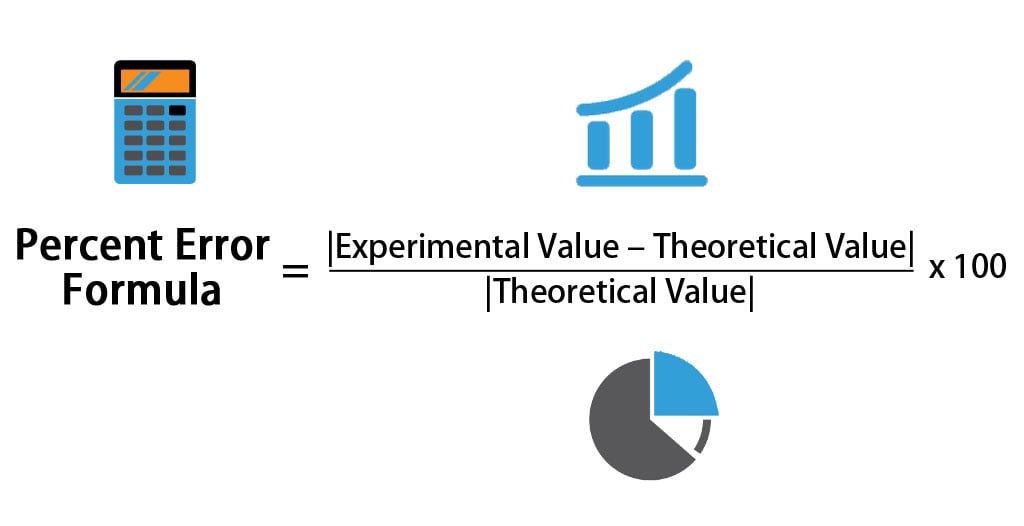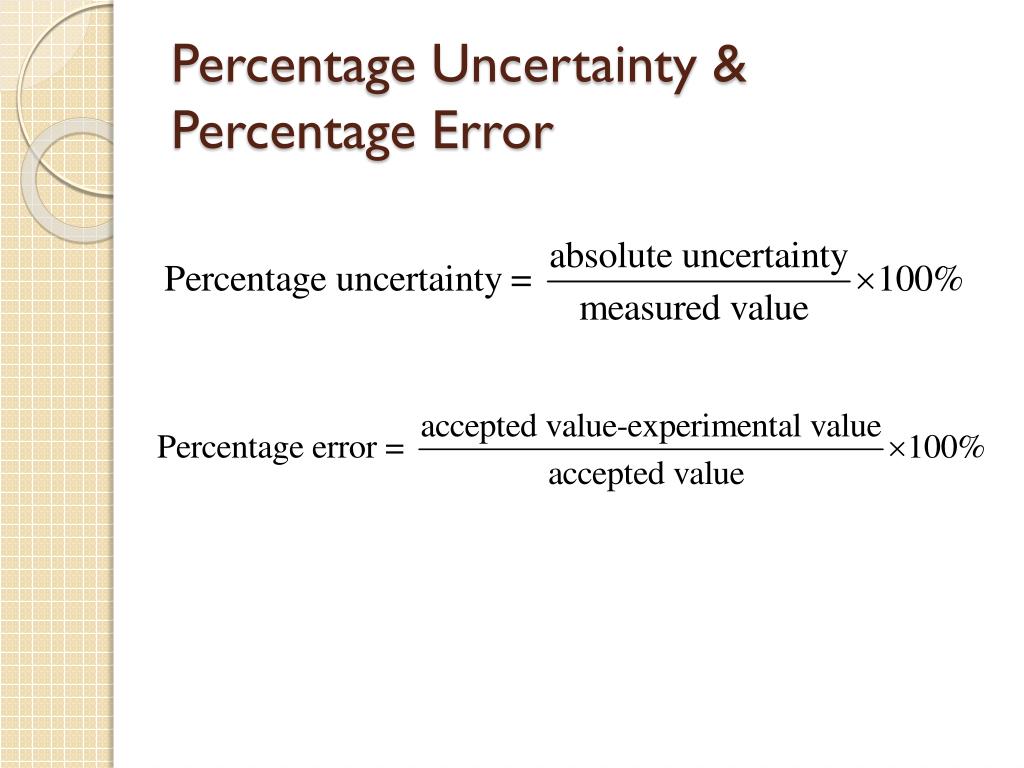

The purpose of a percent error calculation is to gauge how close a measured value is to a true value.Add a percent or % symbol to report your percent error value.Convert the decimal number into a percentage by multiplying it by 100.Divide the error by the exact or ideal value (not your experimental or measured value).Multiply this value by 100% to obtain the percent error:.Depending on what you need, you may discard any negative sign (take the absolute value): 0.02.Subtract one value from the other: 2.68 – 2.70 = -0.02.How do you find the percent error example? The difference between your guess (230) and the actual number (311) in comparison to the actual number (311) expressed as a percent is the percentage error.

What is percentage error give an example?įor example, let’s say you guessed that there were 230 gumballs in the image, but there were actually 311 gumballs. For example, a 5% error indicates that we got very close to the accepted value, while 60% means that we were quite far from the actual value. Percent error is the difference between the actual value and the estimated value compared to the actual value and is expressed in a percentage format. Often, fractional or relative uncertainty is used to quantitatively express the precision of a measurement. Percent error is used when comparing an experimental result E with a theoretical value T that is accepted as the “correct” value. Percent error = |Approximate value – Exact Value|/Exact value * 100. Percent error is determined by the difference between the exact value and the approximate value of a quantity, divided by the exact value and then multiplied by 100 to represent it as a percentage of the exact value.

What is percentage error write its formula? In other words, the percent error is the relative error multiplied by 100. Percent error is the difference between estimated value and the actual value in comparison to the actual value and is expressed as a percentage. For example, a 1% error means that you got very close to the accepted value, while 45% means that you were quite a long way off from the true value.

Smaller values mean that you are close to the accepted or real value. Percent errors tells you how big your errors are when you measure something in an experiment.


 0 kommentar(er)
0 kommentar(er)
